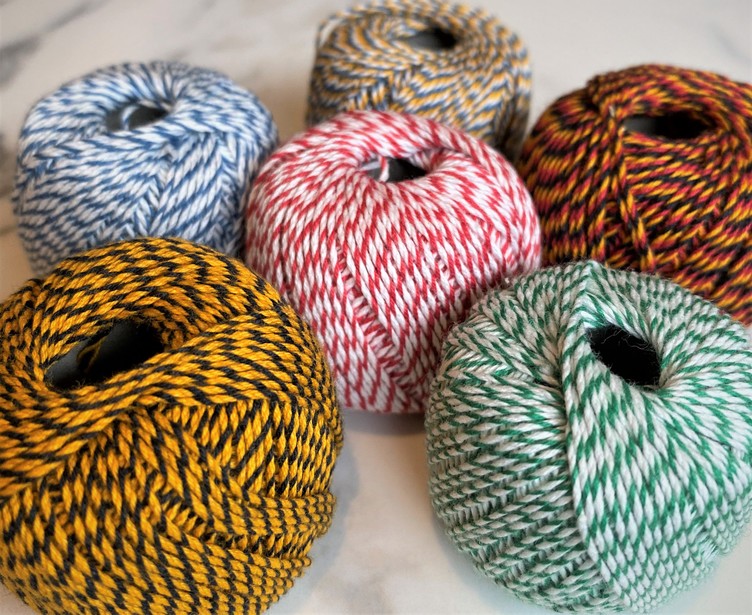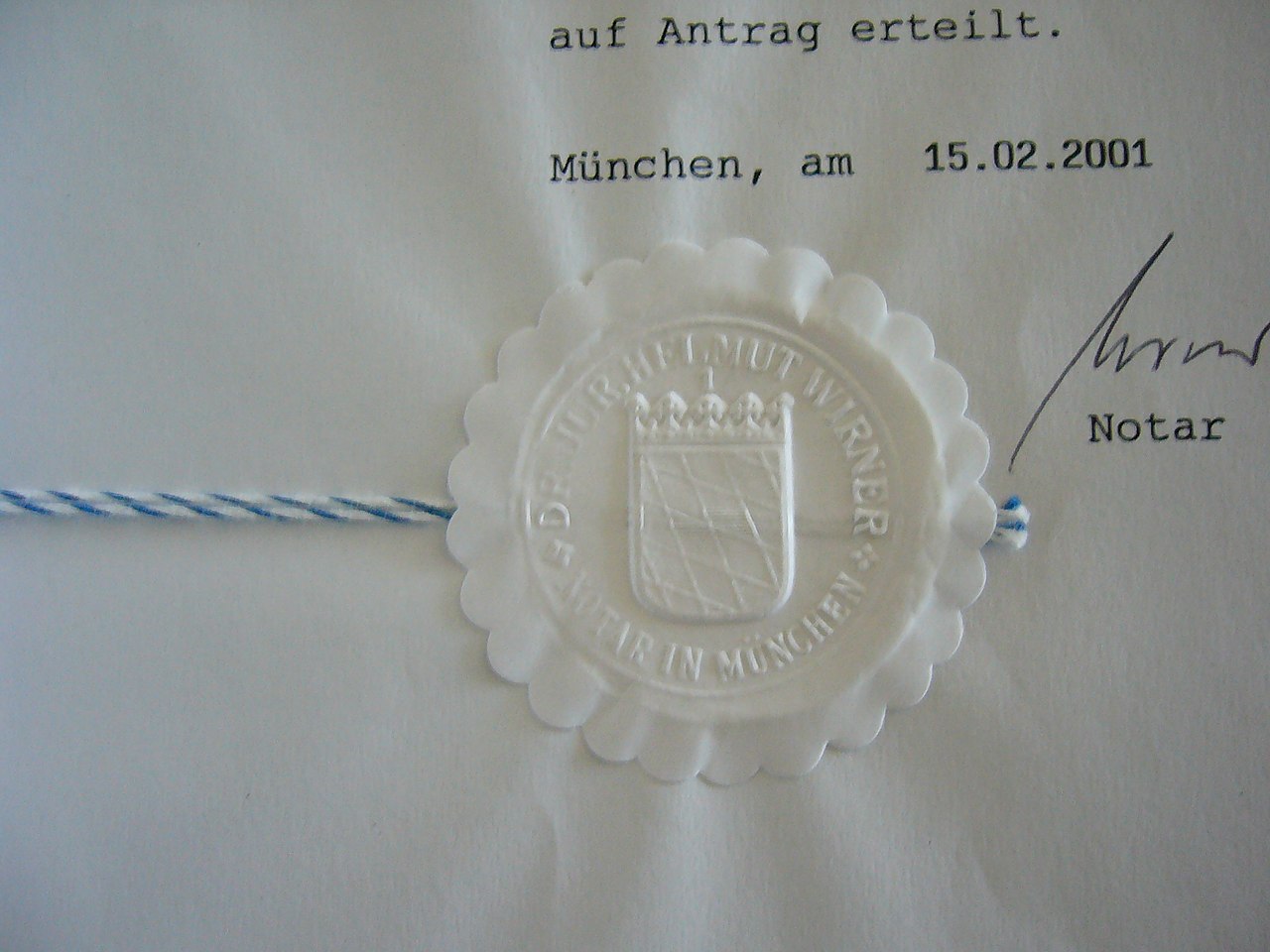
This post follows in the tradition of The Treasury Tag at Bleistift, a post which discussed a specialty stationery item.
The Princes of Paperwork (sorry, there may be a paywall) at The Economist discussed the Notary profession – in some European countries, notaries are embedded in the real estate process and earn a small percentage of the sale price for notarizing the sale documents. Being a notary in such an environment thus pays quite well. There is also – the stationery! In Germany, notarizing a document involves binding the document with string and sealing it with red wax. It even gets better – each German state has their own colour pattern for their string.

A Public Domain image showing the Bavarian version of the string with a notarial seal (but no red wax).
To my surprise, Montréal stationer Papeterie Nota Bene sells this string! (This blog visited Nota Bene in 2013.)
The colour coding (Blue and White for Bavaria, Green and White for Saxony, etc.) scheme can be found in the PDF catalogue of the 102 year old manufacturer Willy Heckmann GmbH & Co. (My thanks to Gunther from Lexikaliker for locating that catalogue.)
It can of course be used as office/household string. I think the colour combinations are nice. A long running German-English legal translation blog suggested in 2003 that translators may also be users of notarial string. An image search also shows quite a bit of historical use, particularly the red and white string.

Thank you for this fascinating article. Do you know if other countries also use notarial string?
Thank you for the link.
I have not heard of any other notarial string usage. I don’t even have the full story here – is this a custom, or is it formally required by a professional association of notaries? Perhaps someone out there knows something. The regional colour coding is another really interesting practice that I’ve not heard of.
Thank you for showing these beautiful strings and for the details!
In Germany there is a “Dienstordnung für Notare” (DONot, service regulations for notaries) in which the stapling/stitching (§ 30) and the sealing of documents (§ 31) is prescribed. Every original or certified copy comprising more than one sheet or page must be stitched; the stitching thread must be sealed. Stitching threads in the national colors should be used. – Since you have also mentioned translators: As far as I know there is no presciption regarding these strings for translators.
However, these strings will certainly look good on many other occasions too!
Gunther, thank you for this additional background information.
Thanks for the pingback – I’ll do a new post shortly.
No, translators aren’t obliged or perhaps even allowed to use them. When I did this kind of translation in Germany (I’m in London now), we used to discuss how to bind a translation that was several pages long, and this was one possibility. I used to have some Bavarian and some Federal German thread, and notaries sometimes told us we were forbidden to use it.
Margaret, thank you for sharing some more observations. Forbidden for use seems like a strong approach…
P.S. I appreciate how you have unified the treasury tag and notarial string subjects. I like your comment at Bleistift as well.
Thank you! It’s been many years since my first post.